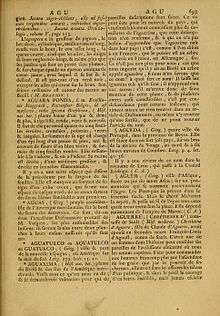Urena lobata
Urena lobata, commonly known as Caesarweed[3] or Congo jute,[4][5] is a tender perennial, variable, erect, ascendant shrub or subshrub measuring up to 0.5 meters (1.6 ft) to 2.5 meters (8.2 ft) tall. The stems are covered with minute, star-like hairs and often tinged purple. Considered a weed, it is widely distributed in the tropics, including in Brazil and Southeast Asia.[6][7][8]
| Urena lobata | |
|---|---|
.jpg) | |
| Scientific classification | |
| Kingdom: | Plantae |
| Clade: | Tracheophytes |
| Clade: | Angiosperms |
| Clade: | Eudicots |
| Clade: | Rosids |
| Order: | Malvales |
| Family: | Malvaceae |
| Genus: | Urena |
| Species: | U. lobata |
| Binomial name | |
| Urena lobata | |
| Synonyms[1][2] | |
| |
Description
Each individual plant grows as a single stalk that freely sends out bushy stems. The leaf shape is palmately lobed (having lobes that spread out like fingers on a hand). Like the stem, the leaves also have tiny hairs. Flowers of the plant are pink-violet and grow one centimeter in width. The fruit is also hairy and may stick to clothing or fur.[9]
Invasiveness
The plant can invade areas of ecological disturbance as well as eroded places, crop plantations, and pastures. Caesarweed is considered an invasive species in the state of Florida, United States. There it grows as an annual in most areas except for in the southern region, where it may live perennially. In Florida, the plant has been reported to grow rapidly from 0.5 meters (1.6 ft) to 2 meters (6.6 ft) by the end of its first year of growth. The plant is not competitive in tall grasses or under canopies.[9]
The University of Florida's pest management procedures for handling this plant include prevention through treating before seeds form and maneuvering vehicles to avoid driving near Caesarweed, mulching and shading to prevent germination, and the use of chemical herbicides.[9]
Aguaxima in L'Encyclopédie

(3rd edition, volume 1)
In the Encyclopédie ou Dictionnaire raisonné des sciences, des arts et des métiers (Vol. 1 [1751], p. 191), Denis Diderot's article about the plant is listed under the heading Aguaxima, a common Portuguese name for the plant.[10][11][12] The entry is notable not for its one-sentence description of its subject ("Aguaxima, a plant growing in Brazil and on the islands of South America."),[10] but for Diderot's editorializing that follows it. Frustrated by the uselessness of such a poor article, he muses about what audience it could possibly serve. His conclusion is a succinct critique of the popular assumption that encyclopedias should be measured according to their breadth or comprehensiveness rather than quality.[13][14]
Aguaxima, a plant growing in Brazil and on the islands of South America. This is all that we are told about it; and I would like to know for whom such descriptions are made. It cannot be for the natives of the countries concerned, who are likely to know more about the aguaxima than is contained in this description, and who do not need to learn that the aguaxima grows in their country. It is as if you said to a Frenchman that the pear tree is a tree that grows in France, in Germany, etc . It is not meant for us either, for what do we care that there is a tree in Brazil named aguaxima, if all we know about it is its name? What is the point of giving the name? It leaves the ignorant just as they were and teaches the rest of us nothing. If all the same I mention this plant here, along with several others that are described just as poorly, then it is out of consideration for certain readers who prefer to find nothing in a dictionary article or even to find something stupid than to find no article at all.[15]
References
- The Plant List: A Working List of All Plant Species, retrieved 17 March 2017
- The International Plant Names Index, retrieved 17 March 2017
- "Urena lobata". Natural Resources Conservation Service PLANTS Database. USDA. Retrieved 27 July 2015.
- Chhabilendra Roul (1 January 2009). The International Jute Commodity System. Northern Book Centre. p. 7. ISBN 978-81-7211-274-5.
- LeRoy Holm (5 March 1997). World Weeds: Natural Histories and Distribution. John Wiley & Sons. p. 238. ISBN 978-0-471-04701-8.
- "Globinmed - Globinmed". globinmed.com. Retrieved 15 September 2015.
- "Urena lobata, Urena lobata". Germplasm Resources Information Network (GRIN). Agricultural Research Service (ARS), United States Department of Agriculture (USDA). Retrieved 15 September 2015.
- Upland Rice Weeds of South and Southeast Asia. Int. Rice Res. Inst. 1999. pp. 58–59. ISBN 978-971-22-0130-1.
- "Caesar's weed". Center for Aquatic and Invasive Plants. University of Florida, IFAS. Retrieved 31 July 2015.
- Diderot, Denis. (1751). Aguaxima. Encyclopédie ou Dictionnaire raisonné des sciences, des arts et des métiers, par une Société de Gens de lettres. Retrieved 16 September 2013 from The Project for American and French Research on the Treasury of the French Language (ARTFL).
- Brazilian popular names of various medicinal plants. Coleção Brasileira de Microrganismos de Ambiente e Indústria.
- Guaxima. Diccionario da Lingua Portuguesa (hostdime.com.br). Archived April 25, 2012, at the Wayback Machine
- Blom, Philipp (2013). A Wicked Company: The Forgotten Radicalism of the European Enlightenment. Basic Books. pp. 247–248.
- Davidson, J.P. (2011). Planet Word. Penguin UK. pp. 295–297.
- Diderot, Denis. (2007). Aguaxima. Encyclopédie ou Dictionnaire raisonné des sciences, des arts et des métiers, par une Société de Gens de lettres (translation by Malcolm Eden). Retrieved 16 September 2013 from The Encyclopedia of Diderot & d'Alembert Collaborative Translation Project website. Ann Arbor, MI: MPublishing, University of Michigan Library.
External links
| Wikimedia Commons has media related to Urena lobata. |
| Wikispecies has information related to Urena lobata |